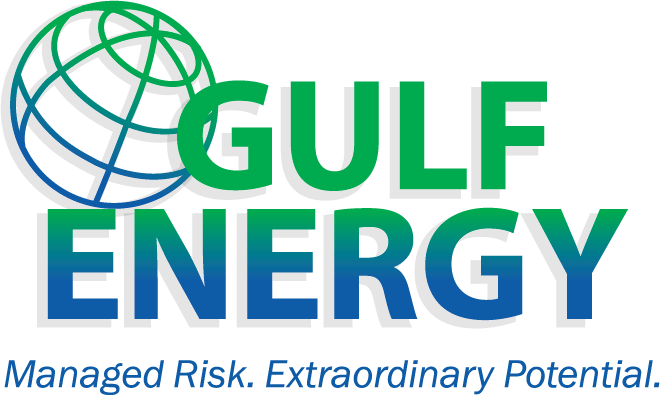Natural gas shortages for decades to come in Southeastern Australia
Source: AEM0 2025 Gas Statement of Opportunities
The 2024 Gas Statement of Opportunities (GSOO) published by the Australian Energy Market Operator (AEMO) forecasts that the most populous southern regions of Australia (New South Wales, the Australian Capital Territory, Victoria, South Australia and Tasmania) are on track to experience increasingly large gas shortages from as soon as 2028 to beyond 2044 with the demand-supply differential becoming greater indicating a definite need for increased gas supply.
The 2025 GSOO makes the following very important observations:
During Australia’s transition to a net zero emissions future, gas will continue to be used by Australian households, businesses, and industry, and to support the operation of the electricity sector. The 2025 GSOO forecasts risks of peak day shortfalls from 2028, and structural supply gaps emerging from 2029 in southern Australia. While the scale of gas consumption remains uncertain through the energy transition, particularly gas usage for electricity generation, all scenarios identify the need for new supply investments to maintain supply adequacy. Gas supply inadequacy risks forecast in the short, medium, and long term are:
Shortfall risks under peak conditions are forecast in southern Australia from 2028, later than forecast in the 2024 GSOO due to expected falls in residential, commercial and industrial consumption of gas, and the delayed retirement of Eraring Power Station reducing forecast gas-powered generation (GPG) of electricity in the near term while it remains online. Seasonal supply gaps may emerge from 2028 if conditions lead to sustained high gas usage.
– The completion of committed and anticipated gas supply developments is vital to minimise shortfall risks.
– Ongoing availability and operation of all deep and shallow gas storages will be critical in minimising the risk of peak day shortfalls and seasonal supply gaps, providing operational flexibility that is important now and into the future to manage gas use variability.
From 2028, seasonal supply gaps may emerge in southern Australia if conditions lead to sustained high gas usage, while expanded production of uncertain supply will be needed to meet domestic and export positions in northern Australia.
In 2029 and later, despite falling forecast gas usage, annual supply gaps are forecast meaning a structural need for new gas supply beyond developments classified as committed and anticipated is necessary to maintain gas supply adequacy, as southern gas production continues to decline. Various solutions are being considered by industry that may address these risks.
AEMO’s forecast for the supply of gas for LNG from eastern Australia is equally dire
Not only is the eastern Australian domestic market supply-demand differential alarming, the forecast fall in gas available for LNG export is going to threaten existing LNG supply contracts to long standing buyers such as Korea, China and Japan potentially causing serious regional energy security concerns.
Proposals that redirecting gas earmarked for export as LNG to avert Australia’s impending east coast domestic gas shortfall are illusory. AEMO forecasts (based on data supplied by industry) show, there is insufficient gas available to satisfy the forecast domestic or LNG demand. More exploration is required to build gas reserves which can be used to meet the domestic and overseas LNG demands.
Source: AEM0 2025 Gas Statement of Opportunities
ACCC confirms AEMO’s warning of imminent critical gas supply problems
The December 2024 Australian Competition and Consumer Commission (ACCC) report entitled Gas Inquiry 2017-2030 Interim update on east coast gas market states:
Natural gas will play a critical role in meeting Australia’s emissions targets. As the country increasingly relies on renewables for electricity generation, gas will be required to support energy security, reliability and affordability, and will remain an important source of energy and feedstock for residential, commercial and industrial users.
Despite the importance of gas in the energy transition, east coast gas supply is in decline. The southern states are already facing seasonal shortfalls of gas, which are made up by gas from Queensland.
In the absence of new domestic supply to fill the gap, consumers in the south will depend in the near term on gas transported from Queensland. As southern haul pipeline capacity becomes increasingly constrained, the southern states will rely on gas imports. Domestic gas prices will therefore become increasingly driven by international oil and gas prices and the cost of transporting gas over large distances across the east coast.
Greater domestic supply would offset these effects but there continues to be insufficient investment in new gas supply and infrastructure. Current projections indicate the potential for structural shortfalls in the east coast from 2027 unless supply increases and/or demand decreases. Gas supply projects subject to conditional Ministerial exemptions under the Gas Code may delay structural shortfalls, however the decline in forecast production is overshadowed by sustained gas demand.
There are significant challenges to investment in new gas projects and infrastructure, including lengthy regulatory approval processes, asset stranding risks and large upfront capital costs.
International LNG demand is forecast to remain relatively strong and continue to incentivise LNG exports from Australia. An increase in international LNG supply is also expected in the coming years, which may place downward pressure on international LNG prices.
The outlook for availability of gas for LNG export from Queensland is also alarming. In previous years LNG producers have produced excess gas and sold it into the domestic market, as well as international markets. The gas sold into the domestic markets have helped avert past potential domestic gas shortfalls, such as in 2022, however, recent information suggests that the LNG producers may not have any excess uncontracted gas available in the next year or so. The quantity of additional gas to be produced from existing supply sources is unlikely to replace the need to develop new sources of production.
So why is there an impending gas shortage?
AEMO forecasts impending southeastern Australia gas shortage from 2028
Petroleum exploration of Australia has shown us that the country is gas prone. There is a greater likelihood of finding gas than of finding oil.
When compared with other countries in the developed world, Australia is under-explored in terms of petroleum exploration. The density of exploration wells in Australia, apart from where commercial discoveries have been made, such as for example the North West Shelf and the Cooper Basin, are sparsely drilled. Like the old saying “The harder I work, the luckier I get” in the petroleum business “The more wells I drill, (in new areas) the more gas I find”. Unfortunately, for a variety of reasons, petroleum exploration drilling has plummeted by 90% since 2009 nearly a decade and a half ago, according to the Australian Bureau of Statistics (ABS).
The APPEA 2020 Key Statistics report shows that from 2009 to 2015 the number of petroleum exploration wells fell by more than 90% (from 340 wells to about 30 wells)!
More recent data from the 2023 Exploration and Appraisal Year in Review published in the PESA Gazette of 8 July 2024 shows that the number of petroleum exploration and appraisal wells stabilised for a while but has been slowly declining over the last few years. Of particular note is that barely any exploration wells are being drilled offshore where historically the largest gas discoveries have been made.
Source: PESA Gazette - 2023 Exploration and Appraisal Year in Review
Source: PESA Gazette - 2023 Exploration and Appraisal Year in Review
Not only that, the few petroleum exploration wells that are being drilled are located in well established gas producing areas almost none are exploring new or sparsely explored parts of Australia, where large new gas reserves are more likely to be found. The map of Australia (left, below) from from the Commonwealth Government geological survey known as Geoscience Australia shows all the petroleum wells drilled in Australia, offshore and onshore. It is apparent that large parts of Australia are either undrilled or barely drilled. The middle map below (also from Geoscience Australia) shows that quite a number of wells have encountered hydrocarbons (petroleum) in areas outside the densely drilled areas where petroleum production has been established. Many of the areas where hydrocarbons have been encountered outside established production warrant further serious investigation. As the right hand map below shows (PESA Gazette of 8 July 2024), disappointingly current recent exploration drilling is still almost exclusively occurring in proven hydrocarbon producing provinces, where it is far less likely to make the major discoveries that will lead to large increases in Australia’s gas reserves.
Oil and Gas Wells Drilled Showing Petroleum Types Encountered
Source: Geoscience Australia
Exploration and Appraisal Wells Drilled in 2023
Source: PESA Gazette - 2023 Exploration and Appraisal Year in Review
the 2023 Exploration and Appraisal Year in Review published in the PESA Gazette of 8 July 2024 makes some salient observations:
With no Federal offshore petroleum acreage release round in 2023, no exploration permit awards, and the continued surrender of exploration permits refer to left hand graph below) , offshore exploration will gravitate to proven areas and tie-backs to domestic gas or LNG projects.
The Cooper-Eromanga Basin is the focus of onshore exploration drilling. However, exploration success rates in the Cooper-Eromanga Basin are declining (refer to right hand graph below) coincident with the total exploration and well count.
There was no 'exploration ‘breakthrough’ or discoveries within a new exploration play.
Cooper-Eromanga Basin Wells & Exploration Success Rates
Source: PESA Gazette - 2023 Exploration and Appraisal Year in Review
Area Under Petroleum Title 2016 – 2023
The current debate in Australia regarding the allocation of a currently known about gas between east coast domestic needs and export has an underlying, unstated premise - that the amount of gas in Australia, especially in eastern Australia, is restricted to the gas reserves we have already identified. This unsound premise is directing public discussion, and shaping government policy, in unhelpful ways.











